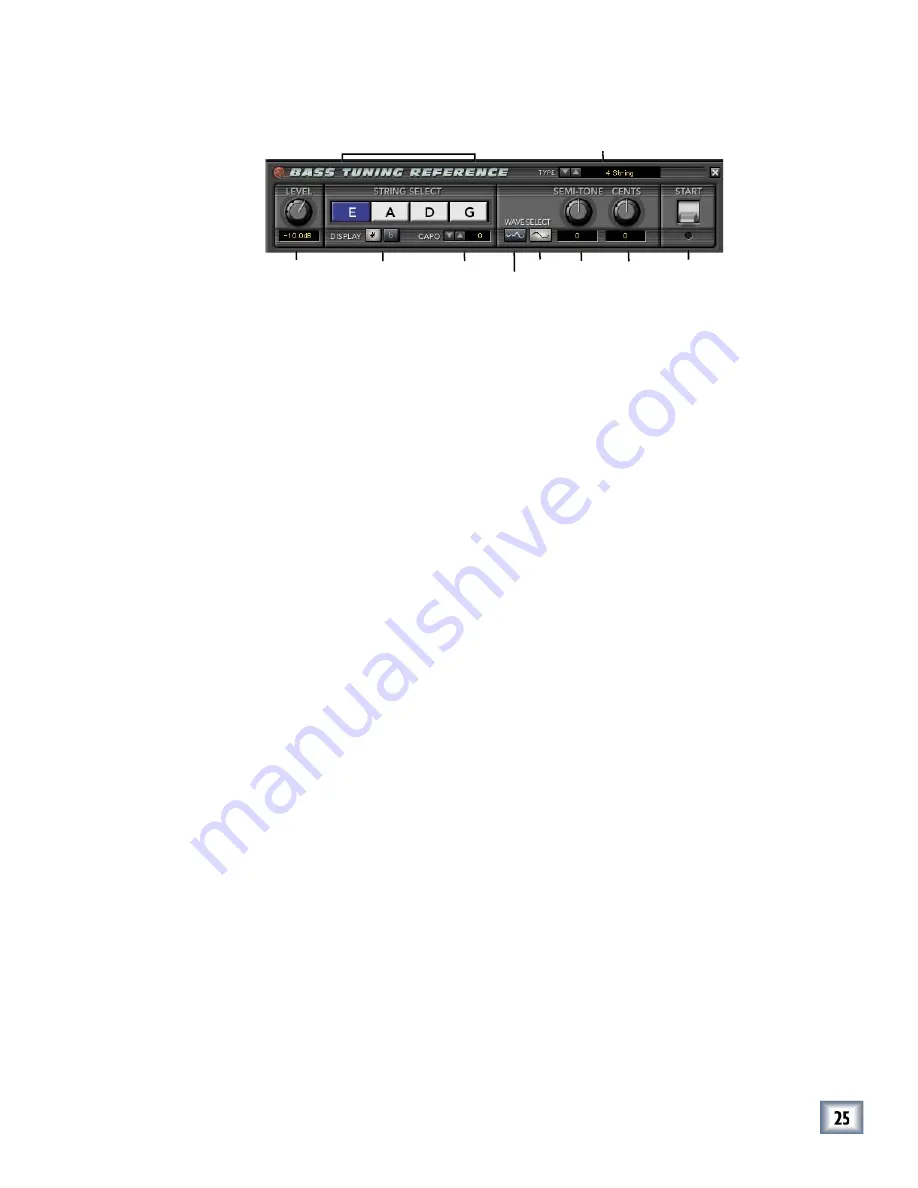
User’s Guide
The Bass Tuning Reference
The Bass Tuning Reference
This offers an easy way to make sure that your bass player is in tune. It’s always a
good idea to check tuning prior to recording.
Type
Use this to select the bass type from 4 string (normal), 5, or 6 string setups. Some
bass guitars have alternate tunings to accommodate alternate string confi gurations.
The String Select plays the appropriate tones for the selected tunings.
Level Pot
Use your mouse to select an output level ranging from off to 0 dB.
String Select
Use your mouse to select the required string and it will be highlighted in blue.
Display
This displays a (viewing only) preference of a pitched semi–tone, as it appears in the
individual string windows. This shows the correlation between sharps and fl at notes
on the scale.
Capo
Capo adjusts string tones for a selected capo position. The tuning (0 to +12) refers to
the frets on the guitar neck
Wave Select
This offers two separate waveform options that can be used as the tuning source
tone. The squiggly line icon is a sine wave with three harmonics, the sine wave sym-
bol is a pure sine wave tone. It may be easier for some to tune to a pure sign wave
while the addition of harmonics can often assist in tuning instruments such as bass
or the lower two stings of a guitar.
Semi-Tone
This offers a +/– semi-tone pitch shift to accommodate alternate instrument tunings.
Use your mouse to turn the control or scroll the digits in the value window.
Cents
Adjusting this control will raise or lower your tone up to + or – 50 cents. The default
is zero. Combine your mouse and control key to reset to 0.
(
Note:
A cent is a unit of a pitch interval equivalent to 1/100th of the semi-tone.)
Start
Left-click to start the tuning reference, click again to stop. Right-click to play a mo-
mentary tone burst for as long as you hold down the button.
Level
Start
Capo
Sine Semi-
Tone
Cents
Sine with
Harmonics
Type
String Select
Type
Display


























